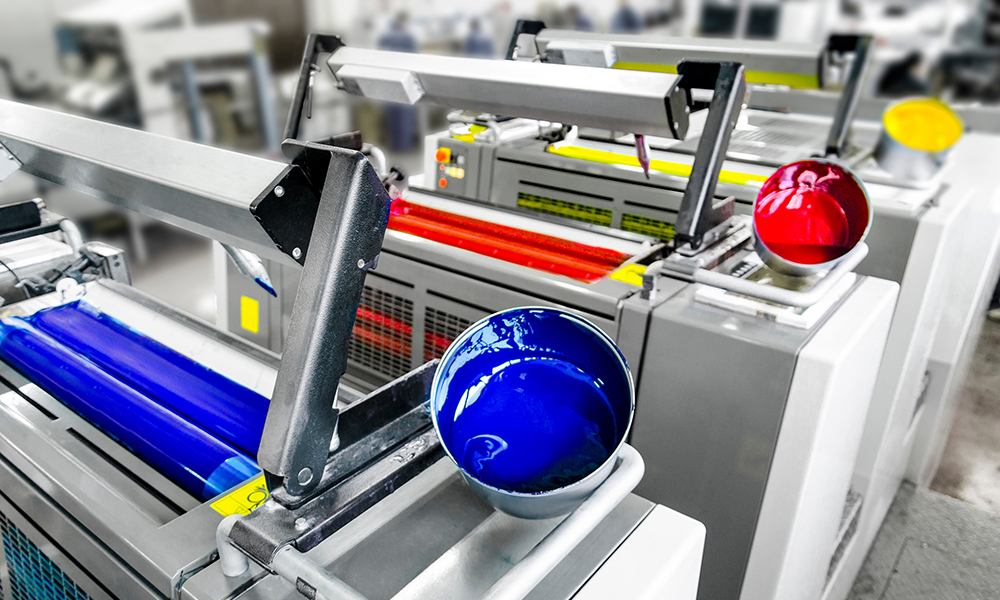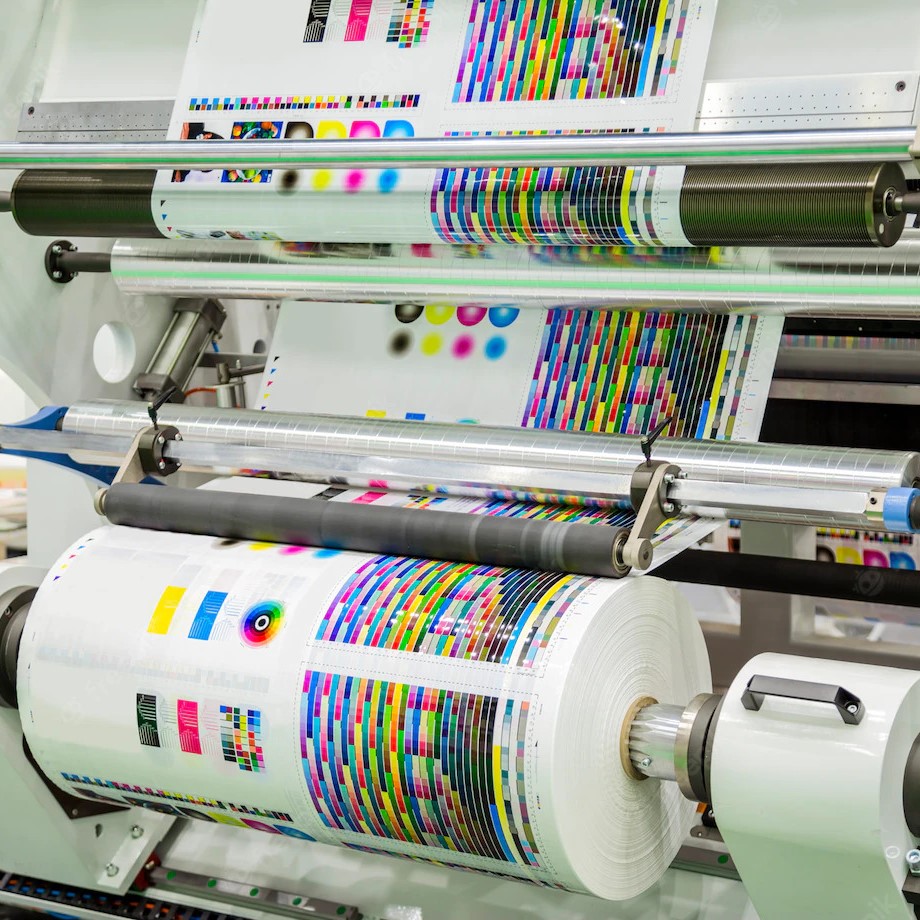The Crucial Guide to Comprehending Litho Printing and Its Applications
Litho printing stands as a significant technique in the printing industry, rooted in the concepts of oil and water repulsion. This technique not just provides high-grade images yet likewise deals with different industrial needs. Its applications vary from advertising materials to product packaging, showcasing its flexibility. As the market adapts to brand-new technologies, the development of litho printing raises concerns regarding its future and significance in a digital landscape. What exists ahead for this withstanding approach?

What Is Litho Printing?
Litho printing, an extensively made use of printing technique, depends on the principle of oil and water repulsion. This method employs a level printing surface, commonly a metal plate, which is treated to guarantee that the photo locations are responsive to oil-based inks while the non-image locations repel them. The process starts with the production of a photo on the plate, usually via drawing or photo means. As soon as the photo is prepared, home plate is dampened with water, complied with by the application of ink. The ink adheres only to the image areas, enabling for accurate recreation of graphics and message. Litho printing is favored for its capacity to generate high-grade prints with great detail and dynamic colors. It is generally made use of in commercial applications, consisting of papers, publications, and product packaging, showcasing its versatility and performance in meeting the needs of modern printing.
The History of Lithography
Lithography is a modern-day printing staple, its beginnings map back to the late 18th century when German dramatist Alois Senefelder developed the method in 1796. Developed as a method for recreating texts and images, lithography made use of a flat stone surface area to produce prints with a chemical process. Senefelder's development permitted higher flexibility and creative expression compared to previous printing methods.By the 19th century, lithography got prevalent acceptance, becoming a prominent choice among artists and authors. It made it possible for the automation of pictures, maps, and posters, especially affecting the printing industry. The method further developed with the intro of lithographic presses, boosting efficiency and quality.As the commercial change progressed, lithography adjusted to fulfill the demands of industrial printing, leading the way for modern-day applications. Today, it remains an essential method in various sectors, including posting, packaging, and art reproduction.
Just How Litho Printing Works
A crucial function of litho printing is its reliance on the concept of oil and water repulsion - litho printing. In this procedure, images are moved from a level surface, normally a steel or polymer plate, to paper. The plate is treated so that the areas planned for printing attract ink, while the non-image locations repel it due to their affinity for water. The printing begins by moistening home plate with water, which sticks to the non-image areas. Subsequently, an oil-based ink is used, sticking only to the desired image areas.When the plate enters into call with the substrate, the ink is moved, developing a print. The litho printing process can generating high-grade images with fine information. It is often made use of for automation due to its effectiveness and uniformity, making it a recommended method for commercial printing applications
Advantages of Litho Printing
One remarkable advantage of litho printing is its capability to create top notch photos regularly, making it a perfect selection for industrial tasks. This printing technique utilizes a flat printing plate, ensuring also ink circulation and sharp details. Litho printing is likewise renowned for its shade precision, making it possible for vibrant and true-to-life recreations, which is crucial for branding materials.Moreover, it sustains a large selection of substrates, including paper, cardboard, and also certain plastics, enhancing its flexibility. The procedure is cost-efficient for large runs, as economies of range decrease per-unit costs. In enhancement, litho printing has a fast turn-around time, permitting efficient production schedules.Its longevity likewise means that printed materials withstand fading, making sure that the final item preserves its aesthetic appeal with time. Generally, these benefits make litho printing a preferred option throughout various industries, adding to its enduring appeal.
Applications of Litho Printing in Company
As organizations progressively look for trustworthy and top quality printing options, litho printing arises as a principal in numerous applications. This technique is specifically favored for creating advertising products such as pamphlets, leaflets, and directories, many thanks to its ability to supply lively shades and sharp images. Furthermore, litho printing is regularly employed for packaging solutions, permitting business to create attractive tags and boxes that improve product appeal.In the field of business identification, litho printing is crucial in producing expert stationery, calling card, and marketing merchandise, which help reinforce brand name recognition. Additionally, it is extensively utilized in the publishing sector for published products such as books and magazines, where regular top quality is paramount. Overall, litho printing's versatility and Continue efficiency make it an essential device for companies aiming to connect successfully and develop a strong market presence.
Artistic Use Litho Printing
Litho printing works as a flexible tool in the domain name of printmaking, offering musicians an one-of-a-kind method to share their imagination. This method permits a vast array of creative applications, from standard prints to contemporary interpretations. By exploring the subtleties of litho printing, musicians can harness its distinct high qualities to boost their work.

Printmaking Strategies Introduction
The artistry of printmaking includes a varied series of strategies, with litho printing sticking out for its one-of-a-kind strategy to photo development. This approach depends on the principle of oil and water repulsion, enabling musicians to draw directly onto a limestone or metal plate with a greasy tool. When prepared, the plate is dampened and tattooed, moving the picture onto paper via stress. Litho printing is celebrated for its ability to generate great information and abundant tonal variations, making it a preferred option amongst musicians. In addition, the process is versatile, suiting both conventional methods and contemporary adaptations. This versatility enables litho printing to bridge numerous creative designs, enhancing the printmaking landscape with its unique attributes and capacities.
Unique Artistic Applications
Exploring the special imaginative applications of litho printing reveals its impressive flexibility in various innovative areas. Musicians make use of litho printing to produce elaborate layouts and textures, enabling expressive and in-depth works. The procedure promotes the reproduction of dazzling colors, making it ideal for illustrations and great art prints. Many contemporary go to these guys musicians embrace lithography for its capability to combine typical techniques with modern ideas, resulting in innovative artwork. In addition, litho printing is commonly utilized in the production of minimal edition prints, improving their worth and appeal. The responsive quality of litho prints adds a distinct dimension, attracting enthusiasts and art fanatics alike. Overall, litho printing remains a substantial tool for creative expression, bridging classic methods with contemporary imagination.
The Future of Litho Printing in a Digital Globe
As the printing market advances, litho printing encounters the obstacle of incorporating digital technologies to stay pertinent. Strategies concentrated on electronic assimilation, alongside fads in sustainability and technology, will certainly shape its future - litho printing. Understanding these characteristics is necessary for market stakeholders aiming to adapt to a rapidly altering landscape
Digital Assimilation Techniques
A growing number of litho printing firms are welcoming digital integration techniques to stay competitive in a significantly digital landscape. By including digital process, see this website these business can streamline procedures and improve performance. This assimilation permits real-time data administration and enhanced interaction between divisions, lowering turn-around times noticeably. In addition, electronic tools enable much better personalization and customization of published products, satisfying particular consumer demands. Companies are additionally embracing hybrid printing remedies that incorporate typical litho techniques with digital technologies, offering adaptability in manufacturing. Leveraging information analytics assists in recognizing market fads and client preferences, allowing organizations to make educated choices. Generally, digital assimilation is becoming essential for litho printing firms aiming to introduce and respond to progressing market demands.
Sustainability and Innovation Fads

Often Asked Concerns
What Materials Are Frequently Made Use Of in Litho Printing?
The products frequently utilized in litho printing consist of aluminum plates, ink, water, and paper. Each element plays a vital function in the printing process, making certain high-quality image reproduction and reliable transfer of ink onto the substratum.
How Does Litho Printing Contrast to Digital Printing?
Litho printing uses premium shade uniformity and high quality for big runs, while digital printing excels in brief runs and personalization. Each approach has distinct benefits, catering to different needs based on production scale and cost-efficiency.
What Is the Normal Turn-around Time for Litho Printing Projects?
The regular turn-around time for litho printing tasks varies, generally varying from a few days to several weeks. Elements affecting this timeframe include project intricacy, quantity, and needed ending up processes, affecting total manufacturing schedules.
Can Litho Printing Accommodate Customized Sizes and Formats?
Litho printing can certainly suit personalized dimensions and styles, permitting flexibility in design. This versatility makes it possible for clients to achieve special print end results customized to their specific requirements, boosting the general effectiveness of their jobs.
What Are the Ecological Impacts of Litho Printing?
The environmental impacts of litho printing consist of source intake, chemical use, and waste generation. Developments in sustainable methods and environment-friendly products are slowly decreasing these negative results, advertising a more environmentally responsible strategy to printing.